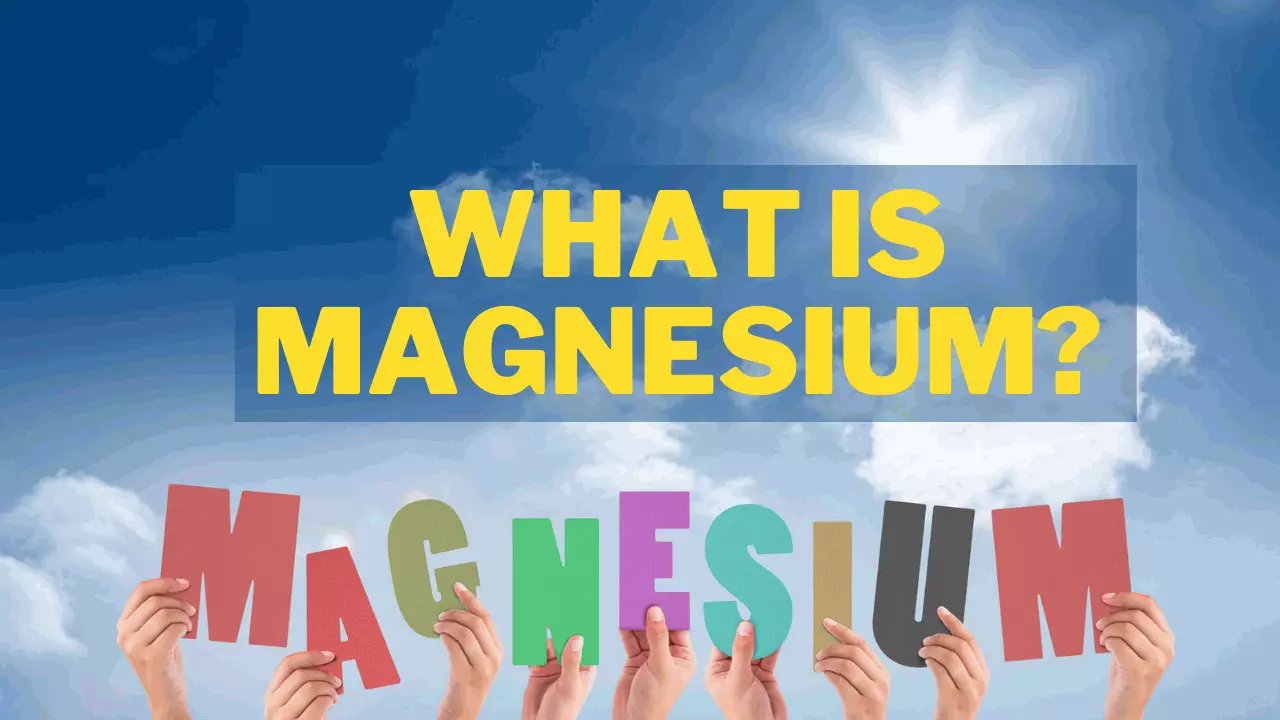
What is Magnesium? Electronic Configuration, Valency, Uses
What is Magnesium?
Magnesium is the eighth most abundant element in the Earth's layer, and the ninth in the Universe. In atomic form, it appears as a grayish, sparse, easily flammable metal that burns with an intense white glow.
Magnesium is a very popular mineral salt. Magnesium is an essential trace element in the body. It participates in more than 300 different reactions, in particular for the transmission of nervous messages, the relaxation of the organism, the formation of bones and teeth and the production of energy.
As important as it is, magnesium is not produced within the body. Its intake through food is essential but often proves to be insufficient to cover the needs. The use of food supplements may be necessary, in particular to combat the consequences of a lack of magnesium such as fatigue, stress, anxiety and muscle cramps.
Magnesium symbol & atomic number
Magnesium is a metallic chemical element, with symbol Mg and atomic number Z = 12. In the periodic table, it is located in the third period and in the second column: it belongs to the alkaline-earth family .
Magnesium has two more protons in its nucleus compared to neon. Its electronic structure is therefore as follows: (K)2 (L)8 (M)2 i.e. 12 electrons distributed in the different layers.
Atomic Mass of Magnesium
Magnesium is relatively soft silvery-white metal. Burns in air and reacts with hot water. Atomic mass of 24.305 g.mol-1.
Origin of the word Magnesium
The word Magnesium was formed from the word "Magnesia", which is the name of a district of Thessaly, very rich in Magnesium in different forms, and in particular in Magnesium Carbonate.
Initially, the scientist who was the first to successfully isolate pure Magnesium, Humphry Davy, proposed the name "Magnium".
General properties of Magnesium |
|
|
Symbol of Magnesium |
Mg |
|
Magnesium Atomic number |
12 |
|
Family |
alkaline-earth metals |
|
Group |
2 |
|
Period |
3 |
Atomic properties of Magnesium |
|
|
Magnesium Atomic mass |
24.305 u |
|
Atomic radius of Magnesium |
171 pm |
|
Electronic structure |
(K)2 (L)8 (M)2 |
|
Electronic configuration of Magnesium |
[Ne] 3s2 |
Magnesium Physical properties |
|
|
Fusion point |
650°C |
|
Boiling point |
1091°C |
Discovery of Magnesium
In 1755, the Scottish chemist Joseph Black recognized Magnesium as a chemical element .
It was only in 1808 that the British chemist Humphry Davy succeeded in obtaining metallic Magnesium by electrolysis of a mixture of Magnesite (MgCO 3 ) and molten Mercury Oxide (HgO). However, he did not succeed in purifying it completely.
Finally, in 1831, the French chemist Antoine Alexandre Brutus Bussy succeeded in developing a method which makes it possible to obtain pure Magnesium.
Electronic configuration of Magnesium
- The chemical element magnesium is distinguished by its atomic number 12, its symbol Mg, and its atomic mass 24.305 u. The electronic configuration of magnesium is 1s2 2s2 2p6 3s2.
- You can write magnesium electron configuration in short form, i.e. [Ne] 3s2
- The magnesium atom and Na-1 , Al+1 , Si+2 , P+3 , S+4 , Cl+5 have the same electronic configuration.
Magnesium has 12 electrons, that is why Magnesium atomic number is 12 and for its electronic configuration you can fill the electrons as per below:
- 2 electrons per 1s sublevel
- 2 electrons per 2s sublevel
- 6 electrons per 2p sublevel
- 2 electrons per 3s sublevel
What is the oxidation state of Magnesium?
Magnesium atoms in compounds have oxidation states 2.
What are the quantum numbers of Magnesium?
Quantum numbers are determined by the last electron in the configuration; for Magnesium atoms, these quantum numbers have the value N = 3, L = 0, M l = 1, M s = -½ .
What is the Ionization energy of Magnesium?
The Ionization energy of Magnesium, Eo = 738 kJ/mol.
What is the valency of Magnesium?
The Magnesium valence characterizes the ability of the Mg atom to form chemical bonds. Magnesium atoms in compounds exhibit valence II.
Isotopes of Magnesium
Magnesium has 22 known isotopes. Among the 22 isotopes of Magnesium, three of them are stable and present in nature:
- the isotope of mass number A = 24, this one being the most abundant, present at 79% compared to the other two
- the isotope of mass number A = 25, representing 10% of the naturally present Magnesium
- the isotope of mass number A = 26, also representing 11% of the Magnesium present in nature
Magnesium Radioactive Isotopes
The other 19 isotopes of Magnesium are therefore radioactive: they are radioisotopes .
The isotope with mass number A = 28 is the one with the longest half-life, around twenty hours. Magnesium 27 has a half-life of approximately nine hours. All other radioisotopes have half-lives of less than a minute, or even less than a second.
Uses of Magnesium
Magnesium is the chemical element of the periodic table whose atomic number is 12, it is represented by Mg. It is the ninth most abundant element in the earth's crust and the third found dissolved in seawater.
The magnesium ion is important for every living cell. Pure magnesium is not found in nature. When produced through magnesium salts, alkaline earth metal is used for alloying elements. This element is not found in its free state in nature, that is, as a metal, but rather forms many compounds, mostly salts and oxides.
Main uses of Magnesium are:
- The main use of this metal is to be an aluminium alloy element, being used in magnesium and aluminum alloys for beverage containers.
- Magnesium alloys, mainly those of aluminum and magnesium, serve as elements of automobile tires and various machinery.
- It is a reducing agent to obtain uranium and other metals.
- In conventional propellants it works as an additive.
- Magnesium compounds, mainly its oxide, are used as a refractory material for furnaces used to produce steel, iron, cement, glass, non-ferrous metals, and also in the construction, chemical, and agricultural industries.
- Magnesium sulfate, chloride and citrate are used in medicine.
- In pyrotechnics, photographic flashes and incendiary bombs for the light that their combustion generates.
- Magnesium carbonate powder is used by gymnasts, athletes, and weight lifters to increase their grip on items and objects they practice with.
- It is extremely important that in difficult climbing, the sweat of the climber's fingers and hands is dried so that the adherence to the rock is improved. This is carried in a bag that is tied to the waist.
Know about more periodic elements- Chlorine, Copper, Gadolinium, Germanium Atomic Number, Neon, Oxygen, Potassium, Promethium, Selenium, Sodium Electron Configuraion, Terbium, Tellurium, Yttrium, Ytterbium Atomic Mass, Zirconium
Related Articales
Recently Posted
-
भगवान गौतम बुद्ध जीवन परिचय | Gautam Buddha in Hindi
December 15, 2022. -
कार्बन के अपररूप Allotropes of Carbon in Hindi
November 5, 2022. -
मिश्र धातु किसे कहते हैं? उपयोग, नाम, गुण Alloy in Hindi
July 27, 2022. -
गलनांक किसे कहते हैं? परिभाषा, उदाहरण Melting Point in Hindi
July 20, 2022. -
परिमाप किसे कहते हैं? Perimeter in Hindi
July 19, 2022.




